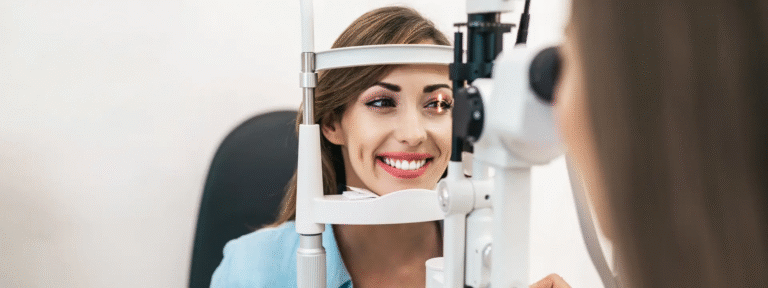As interest in vaginal rejuvenation continues to grow, many women are exploring ways to restore comfort, function, and confidence in their intimate health. One of the most important decisions to make when considering treatment is whether to pursue a surgical or non-surgical approach. Each has its own benefits, recovery timeline, and ideal candidates.
This guide breaks down the key differences between surgical and non-surgical vaginal rejuvenation, helping you make an informed, confident choice based on your personal goals and medical needs.
🔍 What Is Vaginal Rejuvenation?
Vaginal rejuvenation refers to medical or aesthetic procedures aimed at tightening vaginal tissues, improving sexual function, relieving discomfort, and enhancing the appearance of the vulvovaginal area.
These treatments may address:
- Vaginal laxity (looseness)
- Dryness or atrophy
- Decreased sensitivity
- Stress urinary incontinence
- Labial asymmetry or excess tissue
- Pain during intercourse
🛠️ Surgical Vaginal Rejuvenation
✅ What It Involves:
Surgical vaginal rejuvenation is a permanent, invasive procedure performed under anesthesia, usually by a gynecologic surgeon or plastic surgeon. It often involves reshaping, tightening, or removing excess tissue.
🔹 Common Surgical Procedures:
- Vaginoplasty – Tightens vaginal canal and surrounding muscles for improved function and sensation.
- Labiaplasty – Reduces or reshapes the labia minora or majora for aesthetic or comfort-related reasons.
- Clitoral Hood Reduction – Removes excess skin covering the clitoris to improve stimulation.
- Perineoplasty – Repairs and tightens the perineum (area between the vaginal opening and anus), often after childbirth.
- Monsplasty – Reduces and lifts the mons pubis (the fatty mound over the pubic bone).
⏱️ Recovery:
- Requires 2 to 6 weeks of downtime depending on the procedure.
- Swelling, discomfort, and activity restrictions are common post-op.
- Sexual activity usually resumed after 6 to 8 weeks.
⭐ Best For:
- Significant vaginal laxity after childbirth
- Functional or cosmetic concerns that non-surgical methods can’t resolve
- Women seeking dramatic, long-lasting results
⚠️ Risks:
- Infection, scarring, bleeding
- Numbness or changes in sensitivity
- Potential dissatisfaction with cosmetic outcome
💡 Non-Surgical Vaginal Rejuvenation
✅ What It Involves:
Non-surgical vaginal rejuvenation is a minimally invasive, in-office treatment using energy-based technologies to stimulate collagen production, improve blood flow, and restore tissue tone and moisture.
🔹 Popular Non-Surgical Technologies:
- Laser Therapy (e.g., MonaLisa Touch®, FemTouch™, IntimaLase®)
- Uses CO₂ or Er:YAG laser to improve elasticity, lubrication, and tissue thickness.
- Radiofrequency (RF) Therapy (e.g., ThermiVa®, Viveve®, FormaV)
- Uses gentle heat to tighten tissues, stimulate collagen, and improve sensation.
- High-Intensity Focused Ultrasound (HIFU)
- Deeper tissue penetration to improve elasticity.
- PRP (Platelet-Rich Plasma) Injections (O-Shot®)
- Enhances sensation and lubrication using your own growth factors.
⏱️ Recovery:
- No anesthesia or incisions needed.
- Return to daily activities immediately or within a day.
- Recommended to avoid sexual activity for 2–3 days post-treatment.
⭐ Best For:
- Mild to moderate laxity or dryness
- Early signs of vaginal atrophy or reduced sensitivity
- Women preferring a non-invasive, low-risk option
- Maintenance after childbirth or menopause
⚠️ Limitations:
- Multiple sessions often needed (usually 2–3 spaced weeks apart)
- Results are gradual and require maintenance every 12–18 months
- Not suitable for major cosmetic correction or advanced laxity
📊 Surgical vs. Non-Surgical Comparison Table
| Feature | Surgical Rejuvenation | Non-Surgical Rejuvenation |
|---|---|---|
| Invasiveness | Invasive (incisions, stitches) | Non-invasive or minimally invasive |
| Anesthesia Required | Yes (general/local) | No |
| Downtime | 2–6 weeks | Minimal (0–2 days) |
| Pain/Discomfort | Moderate post-op | Mild during/after treatment |
| Duration of Results | Long-term or permanent | 12–24 months (requires maintenance) |
| Cost | Higher | Moderate |
| Ideal For | Significant laxity or cosmetic changes | Mild laxity, dryness, early atrophy |
| Risks | Higher (infection, scarring) | Very low |
| Repeat Treatments Needed | No (usually one-time) | Yes (2–3 sessions, then yearly) |
👩⚕️ How to Choose the Right Option for You
When deciding between surgical and non-surgical vaginal rejuvenation, consider:
🔹 Your Goals:
- Do you want dramatic tightening or reshaping? Surgery may be best.
- Are you looking for gradual improvement without downtime? Try non-surgical.
🔹 Your Health & Lifestyle:
- If you’re not a candidate for anesthesia or want to avoid surgery, energy-based treatments offer a safer path.
- If you’ve had multiple children and experience noticeable looseness, surgery may provide the result you seek.
🔹 Budget and Timing:
- Surgical options have a higher upfront cost and recovery time but longer-lasting results.
- Non-surgical options are more affordable short term but may require annual upkeep.
🩺 Final Thoughts
Both surgical and non-surgical vaginal rejuvenation options are safe, effective, and designed to meet different patient needs. Understanding the differences in outcomes, risks, and recovery will help you choose the best path for your body and goals.
For best results:
- Choose a board-certified gynecologist, plastic surgeon, or aesthetic specialist
- Ask for before-and-after photos, treatment expectations, and risks
- Don’t be afraid to ask about alternative options or combination treatments




